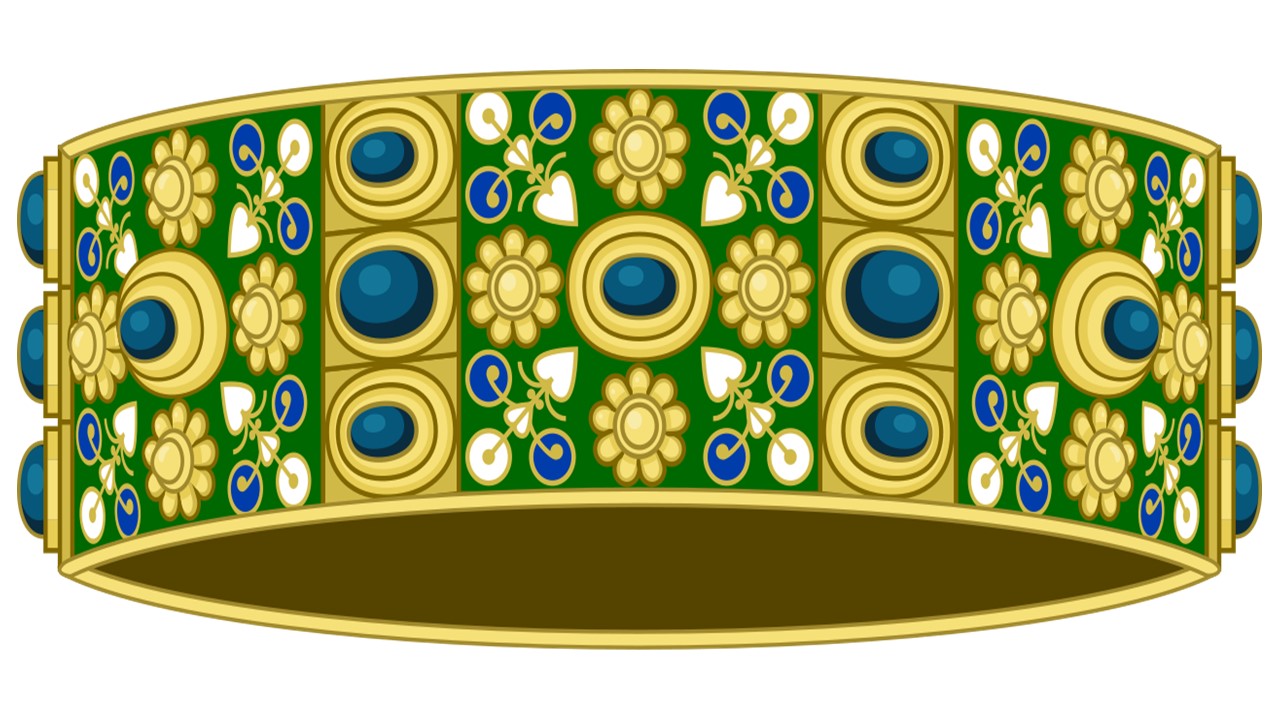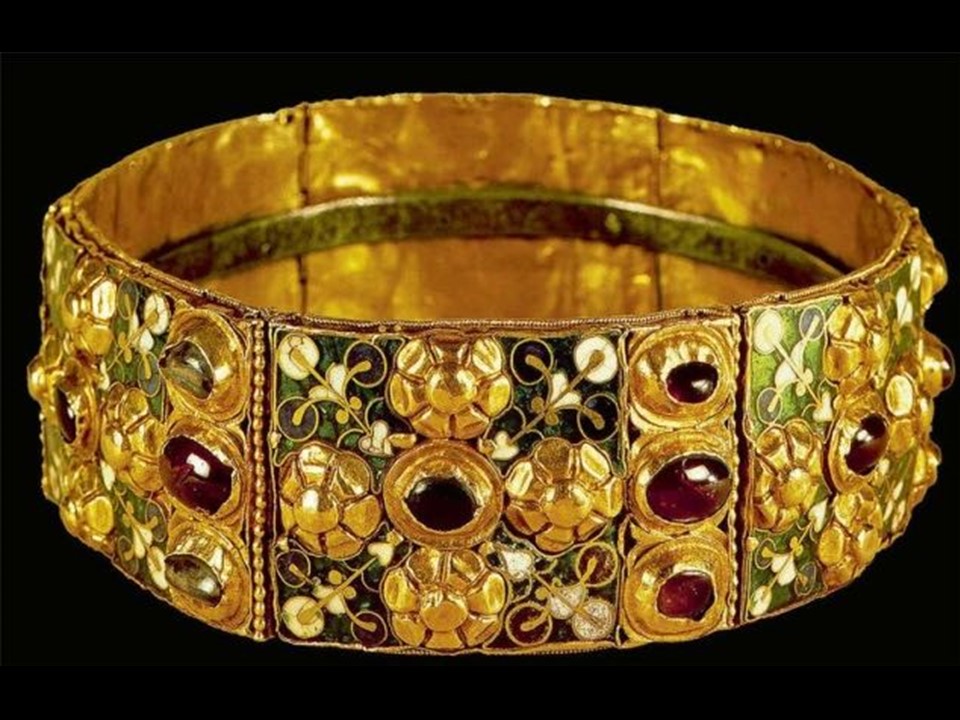
“…And so I left her to her prayers, and went To gaze upon the pride of Monza’s shrine Where in the sacristy the light still falls Upon the Iron Crown of Italy On whose crowned heads the day has closed, not yet The daybreak gilds another head to crown…” by Dante Gabriel Rossetti, A Last Confession
Once upon a time… there was a Bavarian princess named Teodolinda (570 – 627) whose fate was to prudently rule over Lombardy, and bequeath the people of Italy, a great treasure… the Iron Crown of Monza! She was the wife of two Lombard kings, Authari (c. 540 – 590) and Agilulf, (c. 555 – 616) and mother, and regent of king, Adaloaldo (603-629).
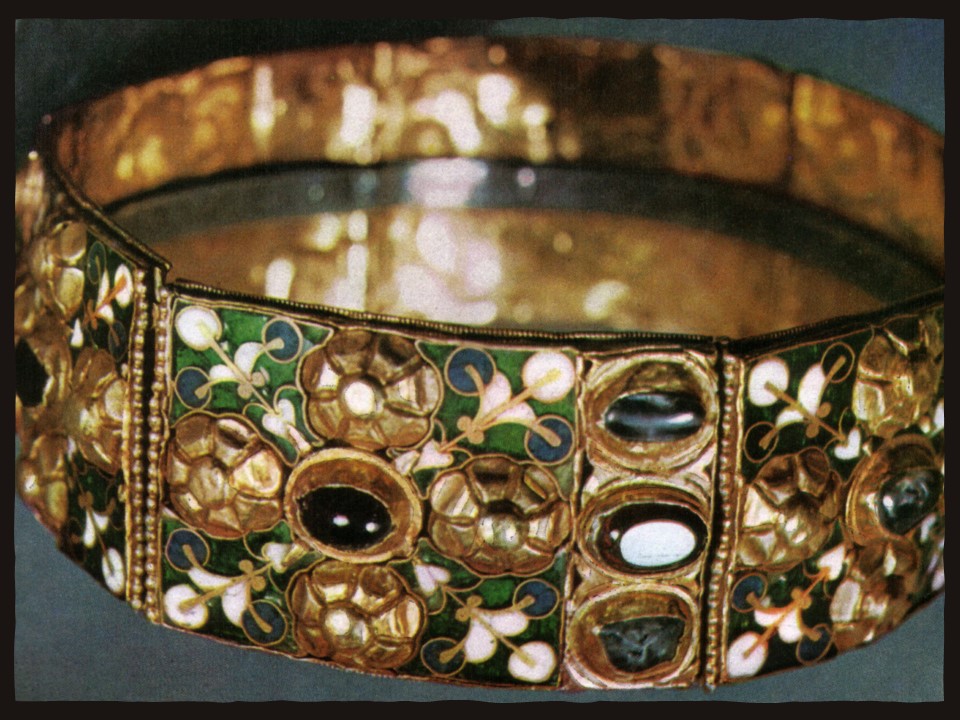
She is described as a beautiful and intelligent woman, a follower of the Nicene Creed (the First Council of Nicaea, 325 – adopted to resolve the Arian controversy) and a devoted friend of Pope Gregory the Great (c. 540 – 604). She is also described as a great patroness of the arts, providing Monza, the Lombard summer capital, with its Cathedral, a spectacular basilica dedicated to St. John the Baptist. A local legend describes how Queen Teodolinda while riding alongside the Lambro River in the area of Monza met with a dove which instructed her to build a church in the area…and how, dutifully, she did! Today, gazing upon the Monza Cathedral one can only think of the truth behind the legend!
Queen Teodolinda and Pope Gregory the Great are responsible for bringing to Monza some astonishing Early Christian works of art and relics. The Iron Crown is one such extraordinary relic, an item of veneration and great mastery of Early Christian goldsmithery.
The Crown consists of six golden, rectangular plates beautifully embellished with enamelwork and cabochon gems… garnets, amethysts and blue corundum. Each plate is divided into two uneven in size, parts. The right part is narrow and consists of a vertical row of three cabochon gems, one under the other. The other one is three times bigger in size and rectangular in shape. It is decorated with a central cabochon gem, four gold rosettes, and four amazing enamelled floral motifs. The combination of shining gold, opaque and translucent enamels add to the grace and beauty of the Crown, making it an alluring artefact of the Early Christian period.
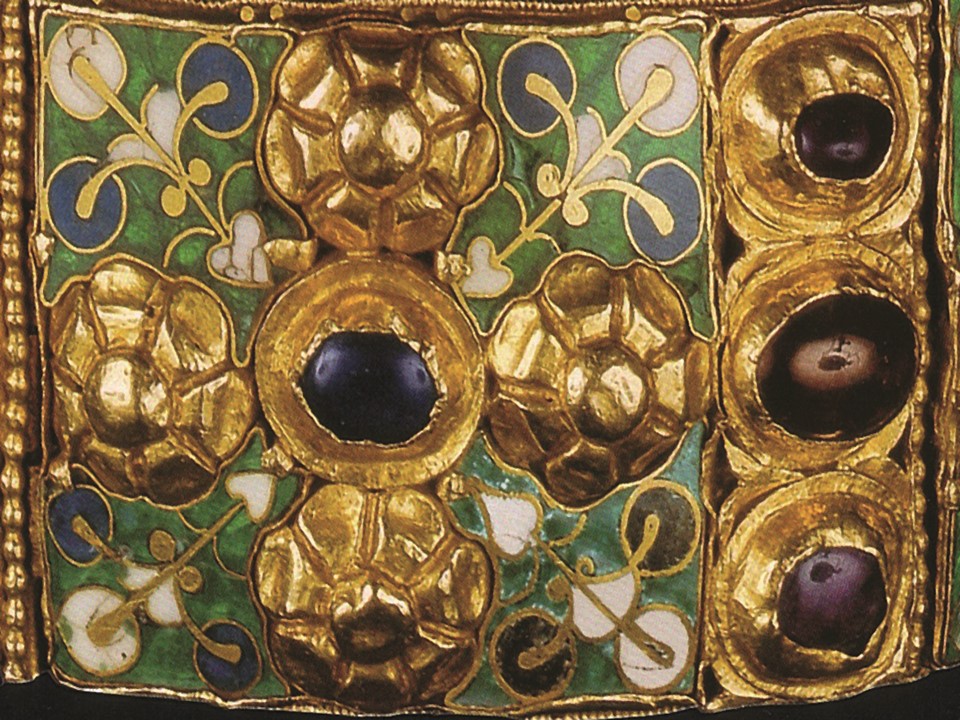
The Iron Crown of Monza is one of the most venerated relics in Italy as tradition and legend ties it up with the Passion of Christ and the first Christian emperor, Constantine. According to Ambrose, Archbishop of Milan, Saint Helena while visiting Palestine in 326, found the nails used for Christ’s martyrdom. One of these nails was inserted as an inner circle in the creation of the Iron Crown that was first worn by no other than Emperor Constantine himself! That Crown, always according to Ambrose, was brought to Milan by Emperor Theodosius, and after many interesting adventures passed to Queen Teodolinda and finally, the Cathedral of Monza. Historically, the Iron Crown was used for the Coronation of all Italian Kings since the Carolingian Period.
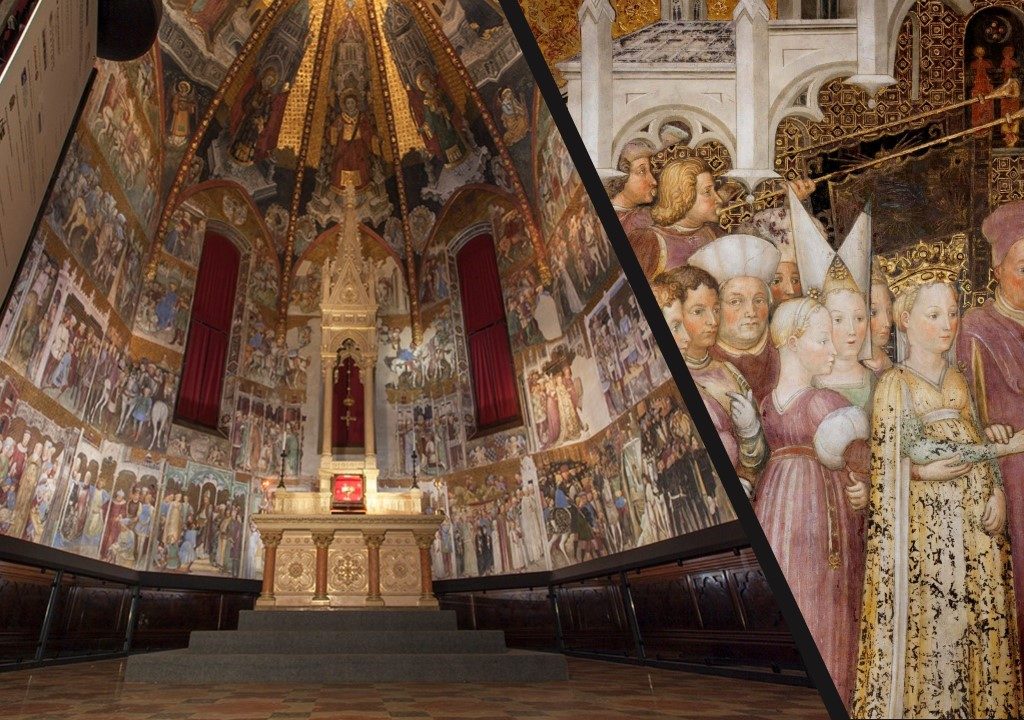
Teodolinda, queen of the Lombards, marries Agilulf, duke of Turin (detail), 1444, fresco, Chapel of Queen Teodolinda, Monza Cathedral
The original Monza oraculum (chapel) built on the Greek Cross plan Teodolinda commissioned back in 595, is long gone… only some walls exist today. On the exact site, however, starting from the 13th century, the Monza Cathedral was built, a Basilica church in the Latin Cross plan with an octagonal tiburium. The famous Teodolinda chapel was built at the same time. Today, the Chapel is famous for the mid-15th century wall paintings, painted by Milanese artists from the Zavattari workshop, that recount 45 episodes from Queen Teodolinda’s life and a consecrated altar, built by Luca Beltrami in 1895-96, that holds this most important of Italy’s relics… the Iron Crown of Monza. https://www.wmf.org/project/duomo-theodelindas-chapel
For a Student Activity, please check HERE!
